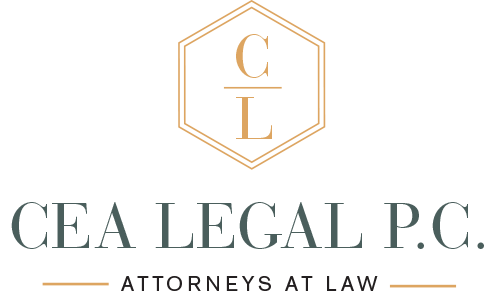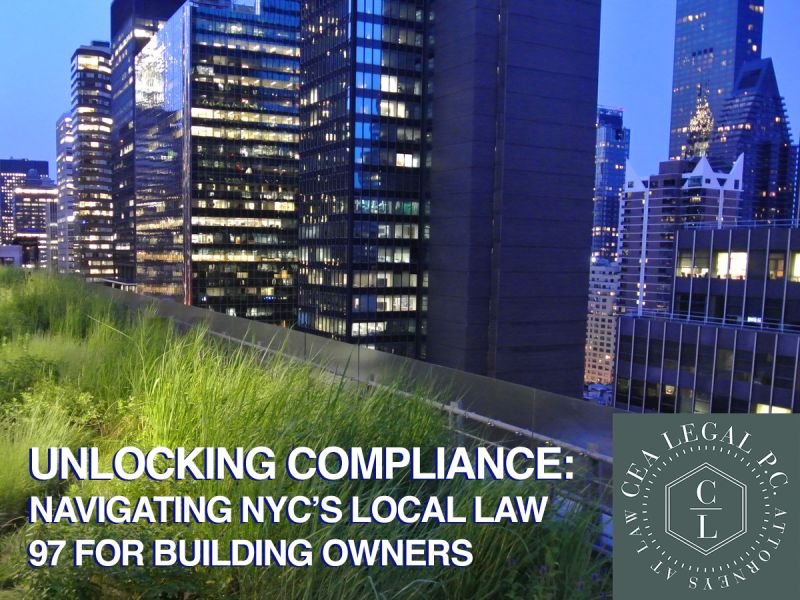Unlocking Compliance: Navigating NYC's Local Law 97 for Building Owners
As New York City takes bold steps towards a greener future, building owners find themselves facing the challenges posed by Local Law 97 (LL97). This groundbreaking regulation mandates progressively stricter emissions limits for thousands of structures in the city, aiming to reduce greenhouse gas emissions and combat climate change. In this blog, we will delve into the key provisions of LL97 and explore how building owners can navigate the compliance requirements to ensure a sustainable and environmentally-friendly future for their properties and the city as a whole.
Local Law 97 (LL97) mandates progressively stricter emissions limits for around 40,000 structures in New York City, commencing in 2024 and extending until 2050. This regulation necessitates property proprietors to either upgrade their buildings to meet compliance standards or face financial penalties. Broadly speaking, Local Law 97 applies to:
Buildings with a gross square footage surpassing 25,000.
Combinations of two or more buildings situated on the same tax parcel that jointly exceed 50,000 square feet.
Groups of two or more condominium structures managed by the same board of managers, with a combined square footage exceeding 50,000.
This definition encompasses roughly 40,000 buildings within New York City and constitutes nearly 60 percent of the city's total building area.
Property owners are obligated to submit annual emissions reports for their buildings, with the initial report deadline set for May 1, 2025. These reports must specify whether the building adheres to the relevant emissions restrictions.
The law establishes progressively stricter greenhouse gas emissions thresholds for various buildings every five years, depending on their designated occupancy category. To calculate the annual emissions intensity limits for a building, the legislation employs a formula that multiplies the building's total floor area by the specific emissions intensity limit assigned to its occupancy category, such as office, retail, industrial, or hotel.
For buildings with multiple uses, where different occupancy categories coexist within the same structure, the highest allowable annual emissions intensity limit is determined by multiplying the square footage allocated to each occupancy category by their corresponding emissions limit per square foot, and then summing these values across all usage categories.
While Local Law 97 (LL97) generally encompasses the majority of sizable commercial and residential structures in New York City, there exist a number of exemptions. These exclusions pertain to buildings in which over 35% of the units are under rent regulation, irrespective of whether these units have income restrictions, as well as Housing Development Fund Corp. cooperatives, buildings with federal project-based assistance, city-owned structures, and officially designated places of worship.
However, despite these limited exceptions, LL97 is anticipated to be rigorously enforced, necessitating building owners to begin planning now for how they will meet the emissions limits set for 2024 and 2030. While some buildings already subject to LL97 may have energy-efficient systems and equipment in place, others will need to undergo substantial upgrades and retrofitting to align with the law's requirements.
In accordance with the recently suggested regulations by the DOB, building proprietors who show “good faith effort” to comply with the emissions limits but fall short by the 2024 cutoff date could potentially receive an additional two-year grace period before facing penalties.
To establish a "good faith effort" and circumvent penalties for a two-year period following the initial 2024 compliance deadline, building owners are required to formulate a decarbonization strategy outlining their approach to reducing emissions below the specified limits. This strategy must encompass a timeline and comprehensive financial information detailing its implementation. Failure to adhere to the plan may result in retroactive fines for the buildings in question.
An additional component of the recently suggested regulations would offer incentives to buildings that take steps to electrify their space or water heating systems, thereby moving away from fossil fuels, prior to the more stringent carbon emission limits coming into effect by 2030. These endeavors would not only expedite the reduction of carbon emissions but also yield local improvements in air quality.
With the implementation of Local Law 97 on the horizon, New York City building owners must prepare for a new era of compliance and sustainability. The road to meeting the emissions limits set by LL97 may require significant upgrades, retrofitting, and the development of decarbonization strategies. However, by embracing these changes and taking advantage of incentives for electrification, building owners can not only meet regulatory requirements but also contribute to a cleaner and healthier city. By unlocking compliance with Local Law 97, building owners have the opportunity to play a vital role in shaping a more sustainable future for New York City and beyond.


